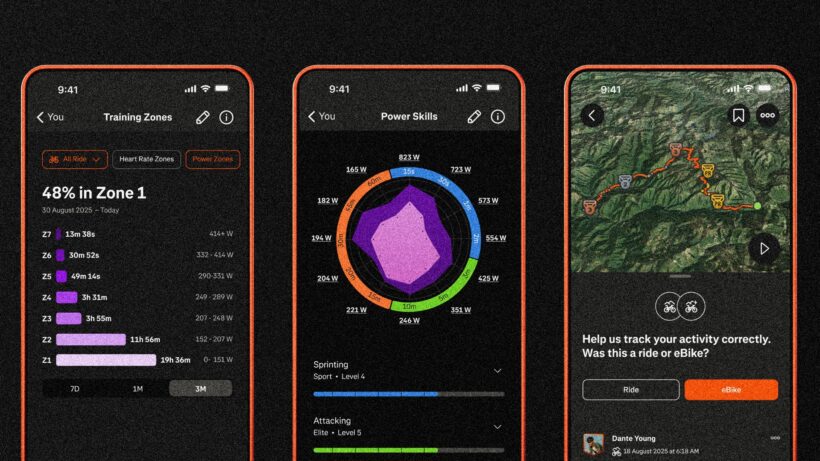New 'Power Skills' and 'Training Zones' aim to help Strava users train smarter
Strava has today announced a major overhaul of its training and routing tools for paid subscribers, coinciding with the release of new mid-year data that reveals how its community is training and competing so far in 2025.
The updates include new power and time-in-zone analysis features, a redesigned mobile Route Builder, and another update to make its leaderboards fairer.
For cyclists with a power meter, the new ‘Power Skills’ feature (which integrates technology from Strava’s recent acquisition, The Breakaway) will provide a visual breakdown of their power-based personal records across different time intervals, helping them analyze their strengths and weaknesses.
Arriving in September, a new ‘Training Zones’ feature for both runners and cyclists will show how much time they are spending in each heart rate, pace, or power zone over different time periods, helping to better balance effort and recovery.

Alongside the new training tools, Strava is also rolling out a redesigned mobile Route Builder, making it easier to view elevation and surface type, as well as adjust waypoints, such as coffee stops.
In its continued bid to help improve the integrity of its leaderboards—something it’s really been combating with machine learning over the last year—the platform is also removing E-bike rides from ‘regular’ leaderboards.
New features joined by insights into Gen Z and Boomers’ trends
These new features arrive as Strava’s mid-year ‘Year in Sport’ data is also doing the rounds from the tracking platform.
Key highlights from its latest report include PB deep dives, suggesting 42% of runners have logged a personal best in a major race distance so far this year. It also reveals how different generations are stacking up against one another, with 80% of Boomers on the platform hitting a segment PR, compared to 56% of Gen Z.
The report also offers insight into the wearables the community is logging with, noting that Gen Z athletes are the primary drivers of Apple Watch uploads on Strava.
Taken together, the data and new features show Strava is working hard to provide more value for its subscribers (check out our explainer and dive into the value of a full Strava membership here)—not too dissimilar to what we see from Oura and Whoop, both of which are delivering very consistent updates to their platforms.
As ever, we look forward to testing these latest additions out—stay tuned for more analysis once we’ve had the chance to dive in fully.




